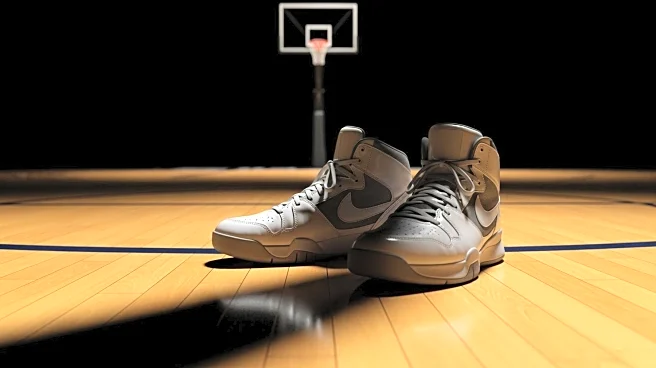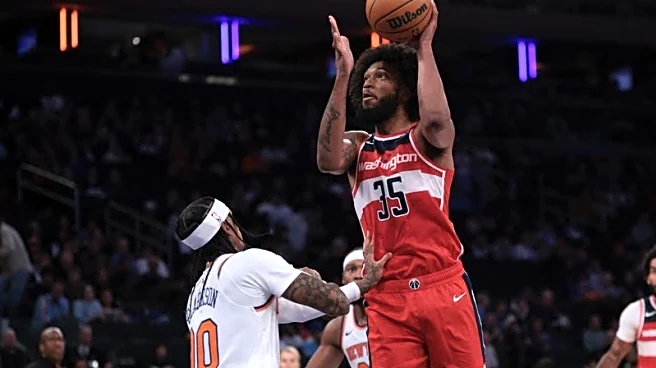What's Happening?
Joel Embiid, the Philadelphia 76ers' star center, made a significant return to the court during the team's final preseason game against the Minnesota Timberwolves. Embiid, who had been sidelined since
February due to left knee pain, underwent arthroscopic knee surgery in April. In his first game back, he scored 14 points, provided 8 assists, grabbed 7 rebounds, and made 3 steals in just 19 minutes of play. His performance contributed to the 76ers' 126-110 victory. Embiid's return is a positive sign for the team, which struggled last season, finishing 13th in the Eastern Conference and missing the playoffs for the first time since 2017.
Why It's Important?
Embiid's return is crucial for the 76ers as they aim to improve their performance in the upcoming season. Last season, the team faced significant challenges due to injuries, including Embiid's and Paul George's knee issues. The absence of these key players contributed to the team's poor record. Embiid's presence on the court is expected to bolster the team's performance, providing both offensive and defensive strength. His ability to play consistently without injury will be vital for the 76ers as they seek to regain their competitive edge and return to playoff contention.
What's Next?
The 76ers are set to begin their regular season with a game against the Boston Celtics. The team hopes to maintain the health of its key players, including Embiid and George, throughout the season. The management and coaching staff will likely focus on strategies to minimize injury risks and optimize player performance. The team's success will depend on the ability of its star players to stay healthy and contribute consistently, aiming for a stronger showing in the Eastern Conference.
Beyond the Headlines
The return of Embiid highlights the ongoing challenges teams face with player injuries and recovery. The 76ers' experience underscores the importance of effective medical and training staff in managing player health. Long-term, the team may need to consider adjustments in training regimens and player workload to prevent future injuries. The situation also reflects broader trends in professional sports, where player health and recovery are increasingly critical to team success.












